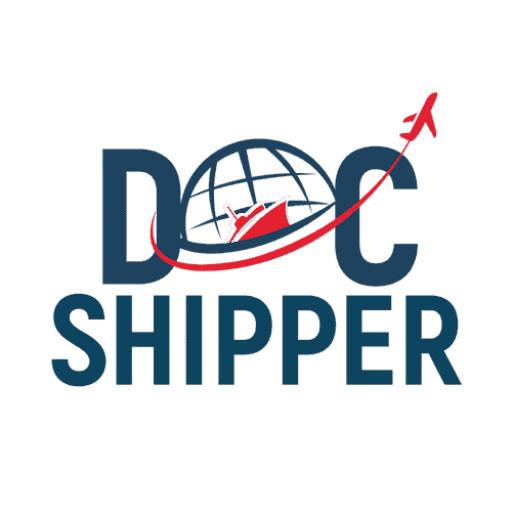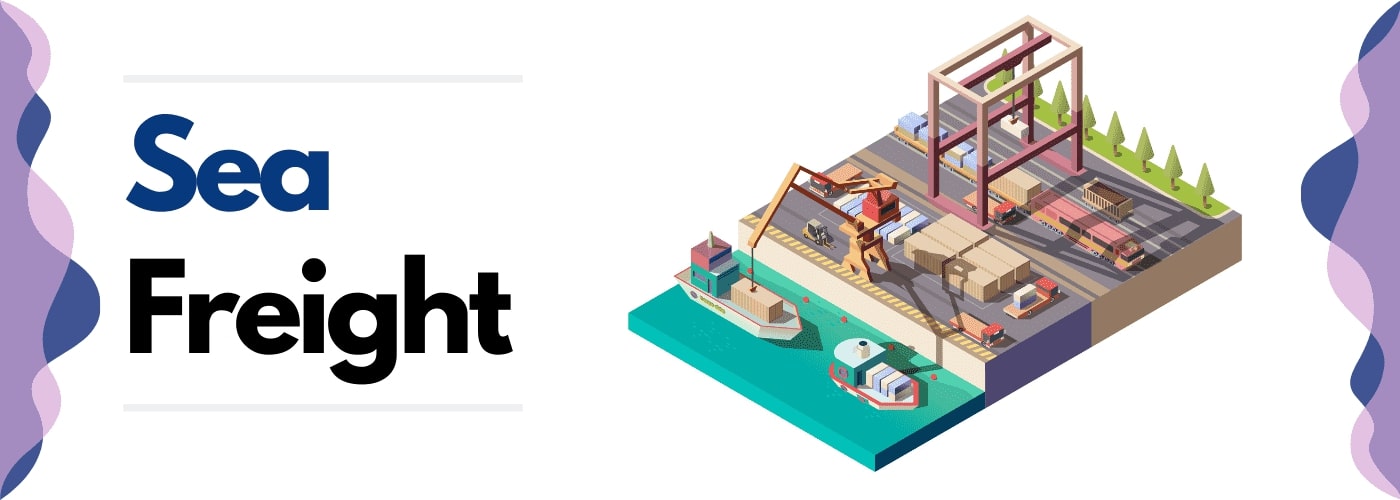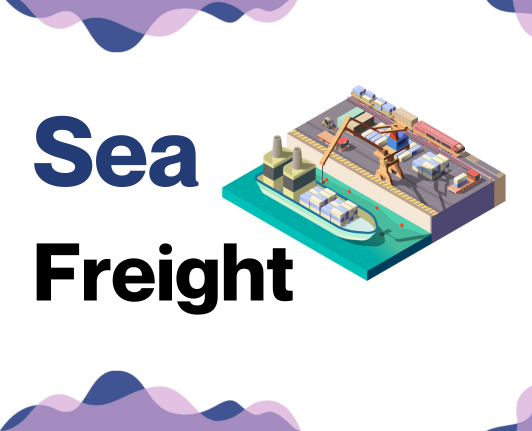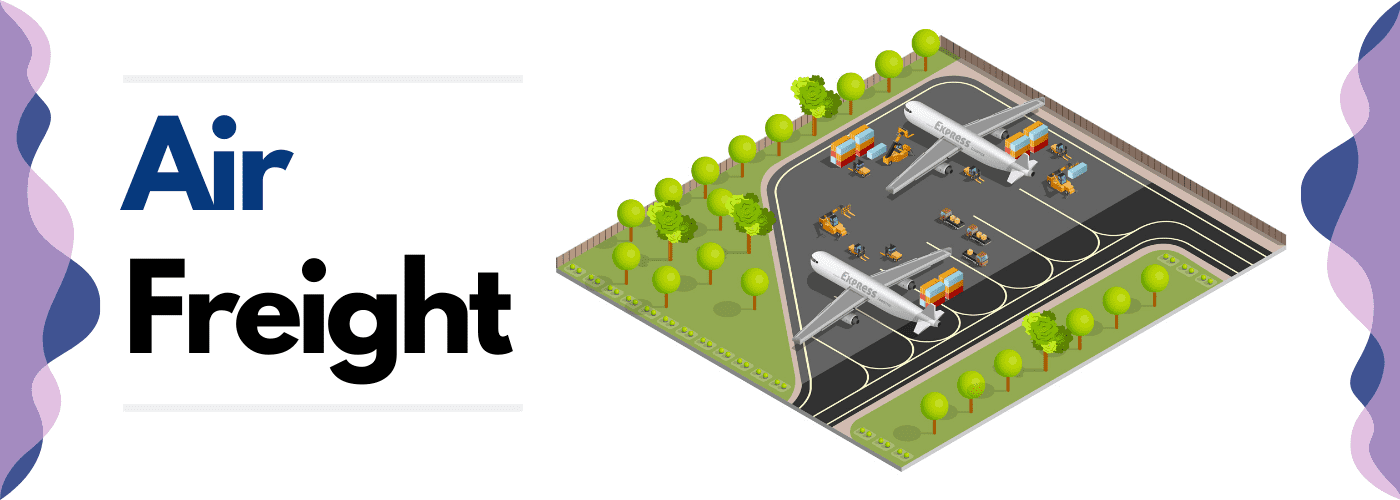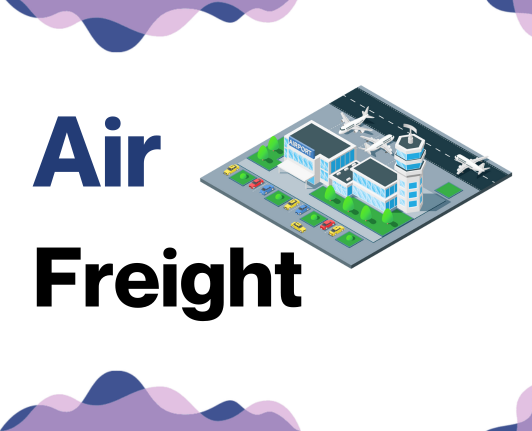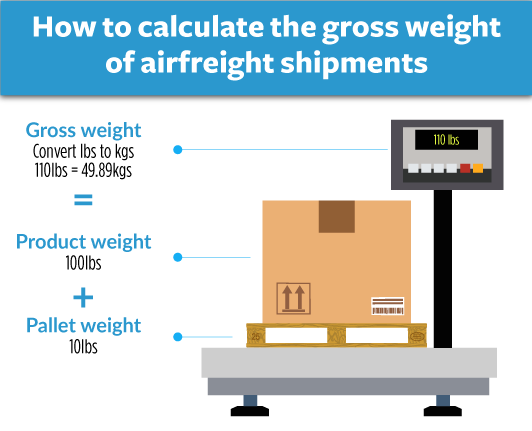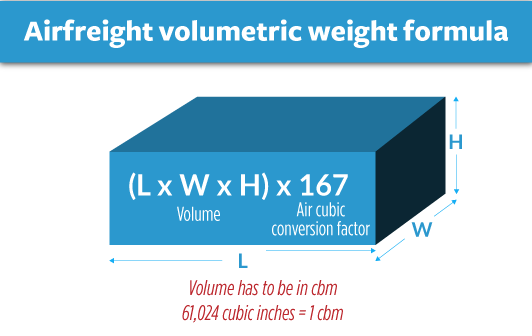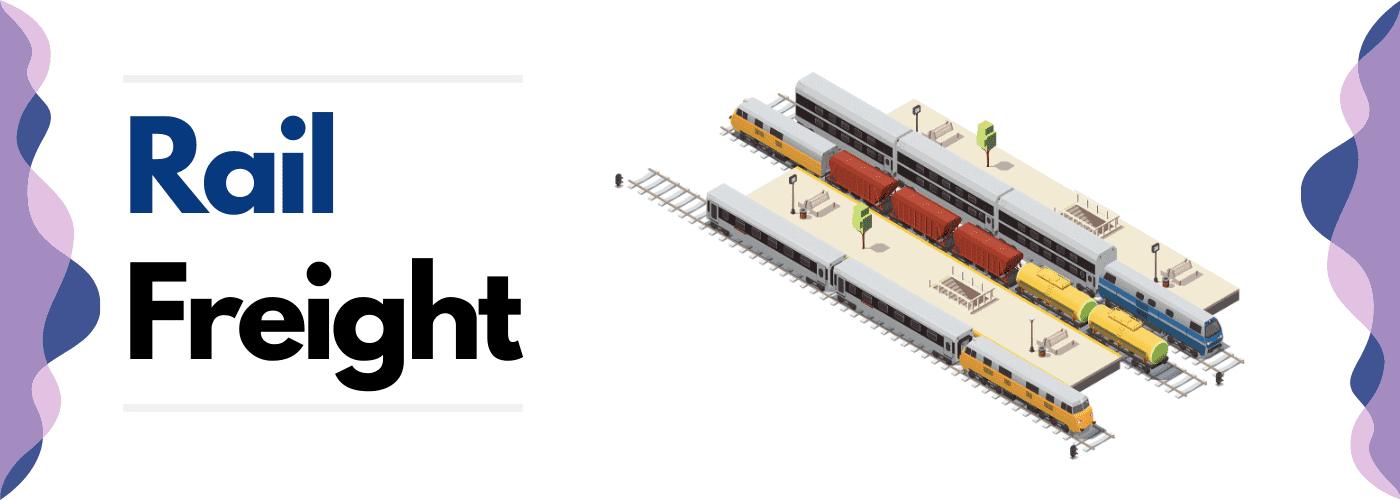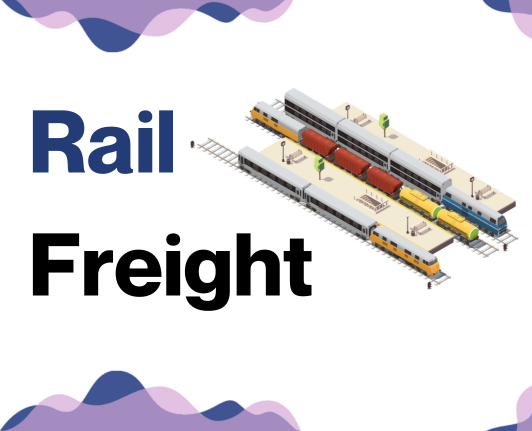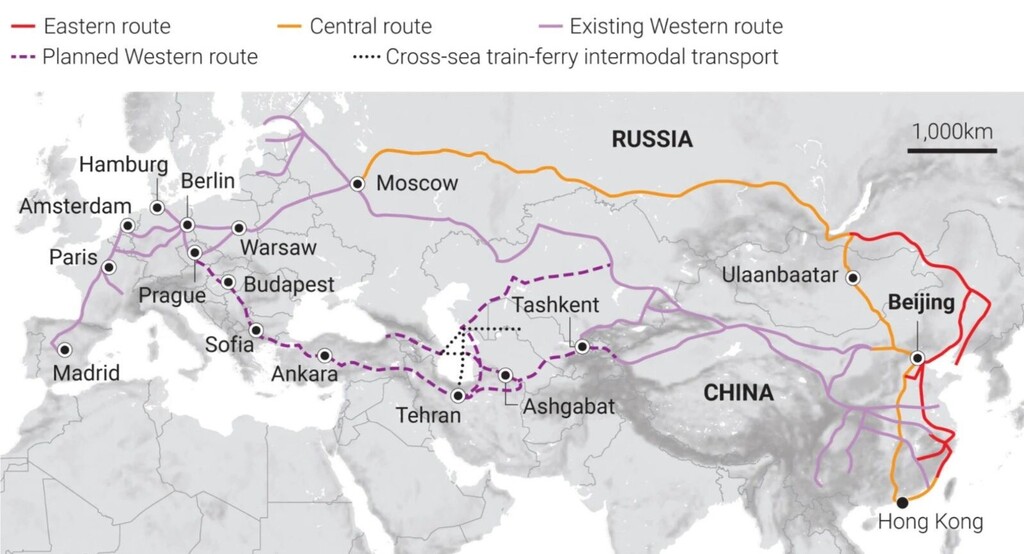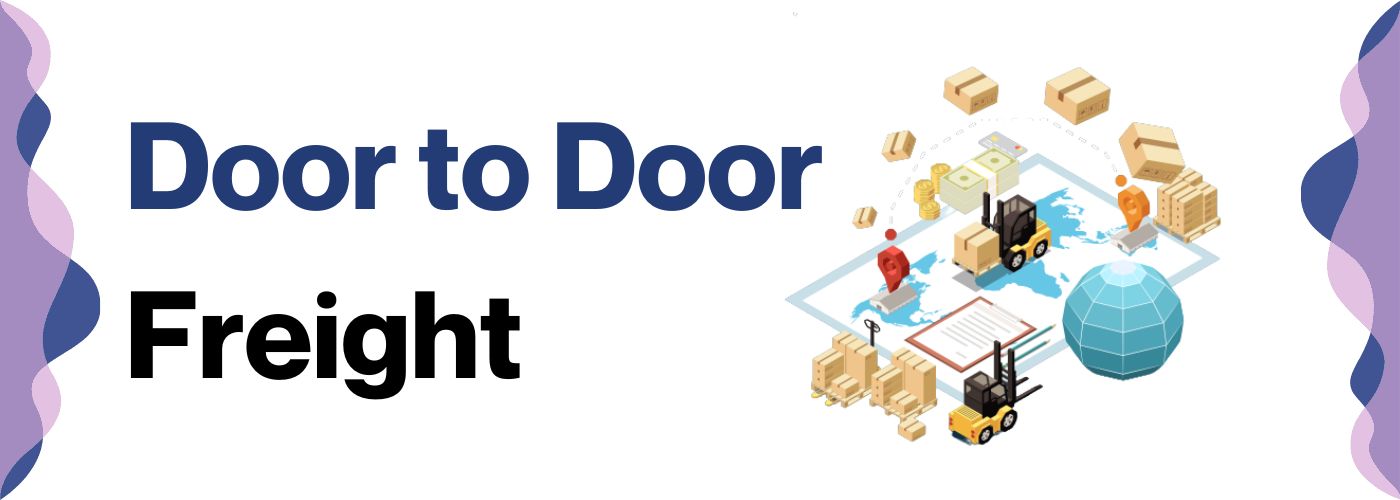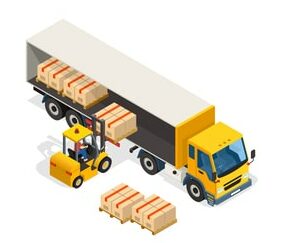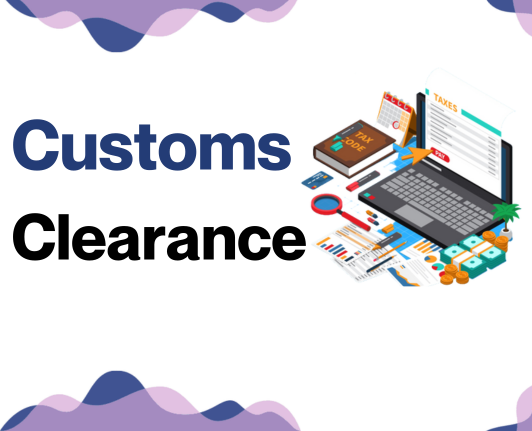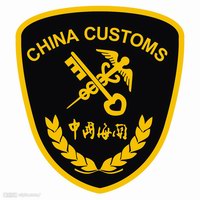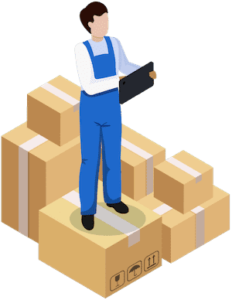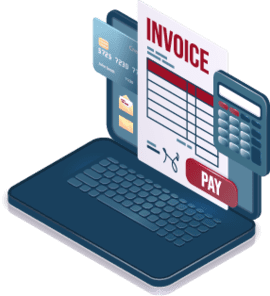Ever tried to play ping-pong with chopsticks? Transporting freight between China and Romania can feel just as tricky! Running into hurdles such as fluctuating rates, transit times, and complex customs regulations often feels like an uphill battle for businesses. However, this comprehensive guide is set to change that, shedding valuable light on the various freight options, simplifying the customs clearance process, and demystifying duties and taxes.
You'll gain business-tailored advice that can transform your shipping strategy. If the process still feels overwhelming, let DocShipper handle it for you! As an international freight forwarder, we take every step to turn these challenges into success, making your shipping journey as smooth as a silk road.
Which are the different modes of transportation between China and Romania?
Deciding the right transport method between China and Romania isn't as simple as choosing the quickest route on a map. Imagine the way a CEO must pick the right team for a project - it's all about fit. Whether it's traversing the winding Silk Road by train, braving the high seas for an ocean freight voyage, or taking to the skies with air transport - each option presents unique advantages and challenges. The perfect method marries your specific shipping needs with the geographical realities of these diverse countries. The goal? A smooth, cost-effective journey for your cargo.
How can DocShipper help?
Shipping from China to Romania can seem complex, but with DocShipper's personalized logistics solutions, it's smoother than a calm sea. Our expert consultants are ready to cut through all the red tape, from transport to customs clearance. Want peace of mind for your shipping needs? Get a free estimate from us in under 24 hours! Quick queries? Our advisors are just a call away.
DocShipper Tip: Sea freight might be the best solution for you if:
- You are shipping large volumes or bulky items, as sea freight offers the most space at a cost-effective rate.
- Your cargo doesn't have an urgent deadline, as sea freight typically has longer transit times compared to air or rail.
- Your shipping routes are between major ports, allowing you to leverage the extensive global network of sea shipping lanes.
Sea freight between China and Romania
Crisscrossed by shimmering seas, China and Romania share an intricate tapestry of international commerce. We're looking at the fulcrum of this trade relationship—ocean shipping lanes, dotted with bustling cargo ports connecting cities like Ningbo to Constanta. While slower than air or road transport, sea freight sings its own economical ballad, making it the go-to choice for businesses shipping large volumes of goods.
But let’s be honest. Mistakes are made—incomplete paperwork, violated shipping regulations, you name it. Between China and Romania, the shipping process can feel like assembling a complex LEGO set, but we've got your blueprint. We'll guide you through the fog of shipping regulations, customs paperwork, and cost calculations. In the chapters to follow, you'll find a treasure map with best practices leading to efficient and effective shipping. Remember, the right knowledge makes the stormy seas of international shipping a lot easier to navigate. Hold tight—ship ahoy!
Main shipping ports in China
Port of Shanghai
Location and Volume: Located in the Yangtze River Delta, the Port of Shanghai is the world's busiest port by cargo tonnage, handling almost 43.19 million TEUs in 2022.
Key Trading Partners and Strategic Importance: Key trading partners are diverse, spanning from other Asian economic powerhouses like Japan and South Korea, to Western giants such as the United States and Germany. It acts as a critical gateway into China's booming eastern coastline.
Context for Businesses: If you're looking to tap into China's enormous customer base or source from its array of manufacturers, the Port of Shanghai's massive capacity and efficient operations may be an indispensable part of your shipping strategy.
Port of Ningbo-Zhoushan
Location and Volume: Situated in the Zhejiang province, the Port of Ningbo-Zhoushan is the busiest port by cargo tonnage and the third-busiest worldwide by container volume, facilitating the transport of over 27 million TEUs.
Key Trading Partners and Strategic Importance: It boasts significant trade relations with the US, Europe, and the Pacific rim countries. The port's strategic importance includes its specialty in crude oil and iron ore.
Context for Businesses: For businesses trading in heavy raw materials or operating out of the Pacific rim, the Port of Ningbo-Zhoushan, with its specialized terminals, could be a significant component of your logistics approach.
Port of Shenzhen
Location and Volume: The Port of Shenzhen, located in the Guangdong province, is China's second-largest port, shipping over 26 million TEUs annually.
Key Trading Partners and Strategic Importance: Key trading partners include the United States, Europe, and Asian countries like Singapore and South Korea. It is a strategically significant port because of its vicinity to Shenzhen's massive manufacturing and tech hubs.
Context for Businesses: If your company is involved in the tech or manufacturing sectors, or your logistics involve supply chains in South-East Asia, the Port of Shenzhen's location and capabilities may be integral to your operations.
Port of Guangzhou
Location and Volume: Found in the Pearl River Delta, the Port of Guangzhou is the fifth largest container port in the world, handling about 24.6 million TEUs in 2022.
Key Trading Partners and Strategic Importance: Key trading partners are spread among the ASEAN countries, Europe, and the United States. Recognized for its wide variety of cargo, from petrochemicals to automobiles.
Context for Businesses: If your business involves a broad assortment of goods or focuses on Asian markets, Port Guangzhou's versatility and connections to the ASEAN region might be a crucial cog in your shipping arrangements.
Port of Qingdao
Location and Volume: Established on the south coast of the Shandong Peninsula, the Port of Qingdao dispatches nearly 23.7 million TEUs.
Key Trading Partners and Strategic Importance: With significant trade links to Japan, South Korea, Europe, and the United States, the port is an influential player for North East Asian cargo flow.
Context for Businesses: Businesses looking to facilitate trade with North East Asian countries, or those who are involved with bulk cargo and agriculture commodities, might find Port Qingdao aligns well with their logistics plan.
Port of Tianjin
Location and Volume: Nestled on the western coast of the Bohai Bay, Tianjin sees the movement of over 21 million TEUs.
Key Trading Partners and Strategic Importance: Key trading partners are the United States, ASEAN countries, and Korea. The port's unique selling point is its position as the maritime gateway to Beijing.
Context for Businesses: If your business involves the Northern Chinese market or relies on trade with Korea, the Port of Tianjin's strategic location might help streamline your supply chain.
Main shipping ports in Romania
Port of Constanta
Location and Volume: Located on the western coast of the Black Sea, the Port of Constanta is the largest port in Romania and the fourth largest in Europe. It's a significant hub for trade with a shipping volume of over 66 million tonnes annually.
Key Trading Partners and Strategic Importance: This port has a diverse network of key trading partners, including China, Turkey, and Germany. Its strategic geographic location, connecting the Black Sea with the Danube, makes it important for trans-European transport.
Context for Businesses: If your business includes import/export activities with Europe, Asia or the Middle East, the Port of Constanta, given its extensive capabilities and strategic location, is likely to become an essential part of your logistics chain.
Port of Galati
Location and Volume: Found along the Danube River, the Port of Galati is Romania’s second biggest port. The port handles an average volume of approximately 20 million tonnes per year.
Key Trading Partners and Strategic Importance: Serving as an essential gateway to Moldova and Ukraine, the port has trade ties majorly with the European Union, Russia, and Ukraine.
Context for Businesses: For businesses eyeing opportunities in Eastern Europe and Russia, the Port of Galati, with its strategic geographic location and efficient services, may be the integral part of your shipping route.
Port of Braila
Location and Volume: The Port of Braila is situated on the Danube River in eastern Romania. The port processes millions of tons of cargo yearly, primarily concentrated on agricultural products.
Key Trading Partners and Strategic Importance: It mainly operates with countries from Europe, focusing on agricultural trade, and plays an important role in Romania's grain export industry.
Context for Businesses: If your business deals with the export of agricultural goods, especially grains, the Port of Braila with its modern handling equipment and storage facilities can serve as a potential logistics hub.
Should I choose FCL or LCL when shipping between China and Romania?
Choosing between Full Container Load (FCL) and Less-than-Container Load (LCL) shipping for your cargo from China to Romania is a key strategic decision. It impacts not just your pocketbook, but involves considerations of timing, cargo security, and logistical ease. Get ready to dive into a comparison of both, so you can navigate the high seas of freight forwarding with confidence and choose what suits your specific needs, setting your shipment up for smooth sailing.
LCL: Less than Container Load
Definition: LCL (Less than Container Load) Freight implies shipments where cargo doesn't fill the entire container. This option places varying consignments from different shippers into a single container for shipment.
When to Use: LCL is your go-to strategy if your cargo is less than 13, 14, or 15 Cubic Meters (CBM). This option is favored for its price flexibility, especially if you're shipping smaller volumes.
Example: Let's say you're a crafts entrepreneur in Romania importing custom-made parts from Shenzhen. Your order volumes are unpredictable and seldom do they go beyond 10 CBM. In this scenario, LCL shipping would be an optimal strategy for balancing cost and cadence.
Cost Implications: Since LCL Freight involves consolidating multiple shippers cargos into one container, it generally results in competitive lcl shipping quotes. However, be aware of added costs such as LCL handling fees at both origin and destination points. These can vary and may affect the total lcl freight cost of your shipment.
FCL: Full Container Load
Definition: FCL (Full Container Load) shipping refers to when a shipper rents an entire container for transporting goods. Options include 20'ft and 40'ft containers, depending on your cargo's size.
When to Use: It's advantageous to use FCL shipping when your cargo exceeds 13/14/15 CBM. Why? Besides ensuring safety due to the sealed-in-transit nature of the container, FCL is cost-effective for larger shipments. Those high volume shipments unlock economies of scale, offering you a better FCL shipping quote.
Example: Let's take a toy manufacturer with a shipment of 500 boxes, each 0.04CBM. This total volume of 20CBM exceeds the 15CBM threshold. FCL would make sense in this scenario, allowing their goods to be securely shipped in one single, sealed FCL container, thus ensuring a better unit cost and reduced risk of damage.
Cost Implications: The cost of FCL largely depends on the choice of container (20'ft or 40'ft). While higher in absolute terms, the per unit cost falls sharply as volume increases. So, for businesses with larger volumes, the return on investment is clear: the greater upfront outlay for a FCL shipping container pays off in terms of overall cost efficiency and security.
Unlock hassle-free shipping
Navigating international trade doesn't have to be difficult, especially between China to Romania. Here at DocShipper, our mission is to take the logistical burden off your shoulders. Our Ocean Freight team provides keen insights into logistics, factors like delivery speed, shipping cost and cargo size, to help determine whether consolidation or full container shipping is best for you. Ready to make smarter shipping decisions? Contact us for a free estimation today.
How long does sea freight take between China and Romania?
Sea freight between China and Romania typically takes approximately four to six weeks. However, this transit time is just an average and depends on several factors. Specific ports used, weight, and the nature of the goods in the shipment can all influence the shipping duration. Thus, for a more accurate and tailored shipping estimate, you're encouraged to contact a freight forwarding service, such as DocShipper.
Below is a table that gives an idea of average transit times for sea freight from various ports in both countries:
| Port in China | Port in Romania | Average Transit Time (Days) |
| Shanghai | Constanta | 36 |
| Ningbo | Constanta | 39 |
| Shenzhen | Constanta | 28 |
| Guangzhou | Constanta | 30 |
*Remember, these are general estimates and real transport times can vary. Always consult with your freight forwarder for precise schedules.
How much does it cost to ship a container between China and Romania?
Unveiling the mystery behind ocean freight rates, it's a surprisingly complex puzzle! An exact figure for shipping a container from China to Romania? It's tricker than it may seem. Variables such as the Point of Loading, Destination, carrier choice, nature of goods, and even whimsical market trends influence the shipping cost. But don't let the wide range—$5,46 per CBM to $7,65 per CBM—put you off. Rest assured, our seasoned shipping specialists are ready to decode this for you. They'll tailor the most competitive rates that fit your requirements, because, in our world, each quote is as unique as your business needs.
Special transportation services
Out of Gauge (OOG) Container
Definition: OOG containers are specialized containers designed to handle Out of Gauge Cargo that don't fit within the dimensions of a standard sea freight container.
Suitable for: These containers are ideal for large equipment, machinery, or oversized items that exceed the dimensions of regular containers.
Examples: Typical items shipped using an OOG container might be yachts, construction machinery, or industrial equipment.
Why it might be the best choice for you: If your business needs to transport big and heavy items that won't fit in the standard containers, an OOG container could be your best option.
Break Bulk
Definition: Break Bulk shipping refers to the transportation of cargo that is too large or heavy to fit into containers and must be loaded individually.
Suitable for: It's suitable for large items such as timber, metal sheets, or large machinery that cannot be transported in regular containers.
Examples: Think of shipping large pieces of machinery, steel beams, or wind turbines.
Why it might be the best choice for you: If your freight is not containerizable and needs to stay as a single unit, then shipping as Break Bulk could be perfect for you.
Dry Bulk
Definition: Dry Bulk shipping is for loose cargo load that is shipped in large quantities and unloaded directly into its destination location.
Suitable for: Ideal for commodities like grains, coal, and minerals that are shipped in large volumes.
Examples: This form of shipping is often used for transporting products like rice, wheat, or coal.
Why it might be the best choice for you: For businesses that deal with high-volume, loose good commodities, shipping via Dry Bulk may be your best option.
Roll-on/Roll-off (Ro-Ro)
Definition: The Roll-on/Roll-off method uses a ro-ro vessel designed to carry wheeled and tracked vehicles as all or most of their cargo.
Suitable for: Ro-ro shipping is particularly suited for transport of vehicles, trailers, tractors, and any heavier machinery on wheels.
Examples: Cars, trucks, buses, and construction machinery are all common cargo for Ro-Ro shipping.
Why it might be the best choice for you: If your business involves transporting vehicles or large machinery, using a Ro-Ro service could be your most efficient choice.
Reefer Containers
Definition: Reefer containers are temperature-controlled, refrigerated containers used to ship perishable goods.
Suitable for: They're perfect for products such as fruits, meat, fish, cheese, and pharmaceuticals which require a controlled environment.
Examples: Most commonly used to transport groceries like fresh fruits & vegetables, dairy products, or medicines.
Why it might be the best choice for you: If your business revolves around goods that need a controlled temperature during transport, choosing a Reefer container is likely the right choice.
Regardless of your specific needs, DocShipper has the experience and knowledge to guide your business's shipping decisions. Feel free to contact us for a free shipping quote within 24h, and our expert team will help you every step of the way.
DocShipper Tip: Air freight might be the best solution for you if:
- You are in a hurry or have a strict deadline requirement, as air freight offers the fastest transit times.
- Your cargo is less than 2 CBM (Cubic Meter), making it more suitable for smaller shipments.
- Your shipment needs to reach a destination that is not easily accessible by sea or rail, allowing you to tap into the extensive network of global airports.
Air freight between China and Romania
When shipping items from China to Romania, air freight shines as the speediest and most dependable option. Let's say you need to transport a fresh batch of smartphones or delicate medical equipment–small, high-value goods that won't bulk up the cargo hold. Air freight is tailormade for this, delivering faster than sea or land routes and handling your items with care.
However, imagine making a delicious lasagna, but forgetting to season the layers. It loses its essence, right? That's pretty much what happens when shippers overlook pivotal factors in air freight. For instance, many miscalculate shipping costs by using the actual weight of their goods instead of the volumetric weight. This misstep can lead to a sky-high invoice that nobody saw coming. We'll dive deep into these nuances, sharing insider tips and busting common myths around air freight to help you ensure profitable shipping.
Air Cargo vs Express Air Freight: How should I ship?
Are you baffled about shipping goods between China and Romania? It's like choosing between two appetizing dishes: Air cargo, a cost-effective method that wings your cargo in a shared airline, or express air freight, the pricier but faster option that flies your goods on a dedicated plane. The following guide illuminates the nuances of each option, helping you choose the smartest way to get your valuable cargo from point A to B. Let's dive right into it.
Should I choose Air Cargo between China and Romania?
Using air cargo between China and Romania can be both cost-effective and reliable. Prominent international airlines including Air China Cargo and TAROM Romanian Air Transport offer regular freight services. The cost becomes particularly attractive with shipments above 100/150 kg (220/330 lbs). While transit times might be longer due to fixed schedules, the reliability and potential savings make this an excellent choice fitting your budgetary needs.
Should I choose Express Air Freight between China and Romania?
Express air freight is a swift transportation service that utilizes dedicated cargo planes, excluding passengers. Perfect for lighter, smaller shipments (under 1 CBM or 100/150 kg), this service can significantly expedite business operations. FedEx , UPS, and DHL lead the international scene, renowned for their speedy deliveries and extensive coverage.
Urgent need for goods in Romania from China? Value the idea of quick, secure handover at your desired location? Express air freight might be your top pick. We recommend evaluating the cost-effectiveness for your specific business needs, ensuring a decision for speedy operations doesn't hit the budget lines.
Main international airports in China
Beijing Capital International Airport
Cargo Volume: Nearly 2 million metric tonnes annually.
Key Trading Partners: Primarily handles cargo to and from the United States, Australia, South Korea, and Japan.
Strategic Importance: As the second busiest airport in the world in terms of passenger traffic, it's strategically located as the hub of the Beijing-Tianjin-Hebei region.
Notable Features: The airport has a designated cargo area called the 'BCIA Cargo' for streamlined operations and focuses extensively on high-value cargo such as electronics and pharmaceuticals.
For Your Business: If your business deals with high-value goods and your primary market is in North America, Asia or Australia, consider making Beijing Capital International Airport a part of your logistics plan.
Shanghai Pudong International Airport
Cargo Volume: Over 3.6 million metric tonnes annually.
Key Trading Partners: Handles cargo primarily with the United States, Europe and the Asia-Pacific region.
Strategic Importance: Located in China's financial hub, it's the world's third busiest airport by cargo traffic.
Notable Features: Major global cargo airlines operate here, including DHL, FedEx, and UPS, providing your business with various shipping options.
For Your Business: If your business ships to markets in North America, Europe and the Asia-Pacific, Shanghai Pudong International Airport provides a significant advantage, given Shanghai's position as a global financial hub.
Guangzhou Baiyun International Airport
Cargo Volume: Over 1.6 million metric tonnes annually.
Key Trading Partners: Predominantly trades with North America, Africa and Europe.
Strategic Importance: This airport prides itself on being 'the gateway of the Southern China air corridor,' offering a strategic position for businesses interested in trading with Southern China and nearby regions.
Notable Features: Several global freight forwarders operate here.
For Your Business: The airport is a good choice for businesses dealing with international trade in Southern China, particularly for those seeking connections to emerging African markets.
Chengdu Shuangliu International Airport
Cargo Volume: Roughly 600,000 metric tonnes annually.
Key Trading Partners: Key routes are to South Asia, Europe, North America, and Australia.
Strategic Importance: It's a significant transportation hub in Western China, serving the city of Chengdu and the Sichuan province.
Notable Features: It is recognized as China's Gateway to Europe and also hosts a logistics park supporting express delivery services.
For Your Business: Consider this airport if your business interests are in Western China and Europe. It is particularly beneficial if you utilize express delivery services.
Hangzhou Xiaoshan International Airport
Cargo Volume: Close to 800,000 metric tonnes annually.
Key Trading Partners: Predominantly trades with Europe, the United States, and Asia-Pacific countries.
Strategic Importance: Serving the thriving city of Hangzhou, it provides a vibrant logistics base for Eastern China and is a hub for several domestic and international cargo airlines.
Notable Features: It hosts a dedicated cargo terminal operated by Cainiao Network, the logistics arm of the Alibaba Group.
For Your Business: If your business engages in e-commerce or trades with Europe or North America, Hangzhou Xiaoshan International Airport can be a beneficial part of your logistics chain.
Main international airports in Romania
Henri Coandă International Airport
Cargo Volume: Over 30,000 tonnes per year
Key Trading Partners: Germany, Italy, France, UK, Turkey
Strategic Importance: Romania's busiest airport, located in the capital city of Bucharest, making it a critical hub for international trade.
Notable Features: Offers modern infrastructure, including a state-of-the-art Cargo Terminal, handling varied cargo types including dangerous goods.
For Your Business: Convenient access to key locations in Europe, making it an ideal choice for businesses seeking speed and efficiency.
Avram Iancu Cluj International Airport
Cargo Volume: Approximately 13,000 tonnes per year
Key Trading Partners: Germany, UK, France, Italy, Spain
Strategic Importance: Second busiest airport in Romania, in the heart of Transylvania, acting as a crucial transit stop for Eastern Europe.
Notable Features: A large cargo terminal able to manage wide-ranging goods including live animals and perishable goods.
For Your Business: Well-suited for handling diverse and specialized goods, providing businesses with premium delivery options.
Timișoara Traian Vuia International Airport
Cargo Volume: Around 8,500 tonnes per year
Key Trading Partners: Germany, Austria, Italy, UK, France
Strategic Importance: Located in Western Romania, providing connectivity to both Central and Southern Europe.
Notable Features: Dedicated cargo handling facilities providing seamless cargo operations.
For Your Business: Effective for businesses looking to balance cost and speed, while reaching multiple European hubs.
Sibiu International Airport
Cargo Volume: Approximately 8,000 tonnes per year
Key Trading Partners: Germany, UK, France, Austria, Spain
Strategic Importance: Offers critical connectivity to Southern and Central Europe.
Notable Features: Features dedicated cargo facilities and is known for its cargo handling efficiency.
For Your Business: An efficient option for businesses shipping to European markets, especially the automotive sector due to nearby manufacturers.
Iași International Airport
Cargo Volume: Around 6,000 tonnes per year
Key Trading Partners: France, Italy, UK, Germany, Spain
Strategic Importance: Located in the North-East of Romania, links Eastern Europe with Western markets.
Notable Features: Recently expanded cargo terminal with advanced facilities.
For Your Business: Consider this airport for expanded reach into Eastern Europe markets, while offering efficient cargo services.
How long does air freight take between China and Romania?
Shipping between China and Romania typically takes an estimated 6-9 days by air freight. However, this transit time can fluctuate significantly depending on the specific airports, the weight of your shipment, and the type of goods being transported. Factors such as custom checks and weather conditions may also bring about delays. For the most precise and accurate transit times, you would want to consult with a seasoned freight forwarder like DocShipper to meet your unique shipping requirements.
How much does it cost to ship a parcel between China and Romania with air freight?
Transporting an air freight parcel from China to Romania typically costs within a broad range of $3 to $15 per kg, depending largely on specific variables. These pricing factors include the distance between departure and destination airports, parcel dimensions, weight, and nature of goods. An exact price isn't achievable without these details. However, be assured that our team is committed to providing tailored assistance in determining the best possible rates for each unique shipment. We provide personalized quotes based on your specific needs. So, reach out to us and receive a free quote in less than 24 hours.
What is the difference between volumetric and gross weight?
Gross weight refers to the actual weight of a shipment, including its packaging. Volumetric weight, on the other hand, refers to the total amount of space the shipment occupies.
In Air cargo, to compute the volumetric weight, you multiply the package's length, width, and height in centimeters and then divide the result by 5000. Let's say you've got a package measuring 50cm x 40cm x 30cm, your volumetric weight would be 504030/5000, which results in 12kg (approximately 26.5lbs).
Gross weight, is simply the actual weight of your shipment. If your package weighs 10kg (approximately 22lbs), that's your gross weight.
Express Air Freight services, on the other hand, calculate volumetric weight in a different manner. They divide the cubic centimeter size by 6000. For the same package dimensions, the volumetric weight would be 504030/6000 equaling 10kg (approximately 22lbs).
Understanding both measurements matter, as freight charges are based on the higher value between the gross weight and the volumetric weight. This billing technique ensures carriers are compensated for space-utilizing but lightweight goods.
DocShipper tip: Rail freight might be the best solution for you if:
- You are looking for a cost-effective transportation method for large volumes.
- Your shipping route is well-connected by rail, providing a reliable and environmentally friendly option.
- Your cargo's destination and origin are near rail terminals, minimizing the need for additional road transportation.
Rail freight between China and Romania
Ever wondered how a shipment from China to Romania could take a scenic rail excursion? Well, your goods too can embark on this historical journey. Ever since the inception of the rail freight link in the early 21st century, it has serenely sliced across the heart of Eurasia, connecting these two vibrant economies. Predominantly touted for the transportation of electronics, machinery, and apparel, this rail route meanders through Kazakhstan, Russia, Belarus, Poland, and Hungary.
Trade and economic cooperation between China and Romania took off on the back of the rail freight, reinforcing a robust logistics network. While the trade-off between cost and transit times may sway, the extended timeline brings a lighter blow to your wallet compared to air freight. Navigating customs procedures can be a challenge, especially while traversing multiple countries along the route, but fear not! Dive deeper into understanding rail freight and see if it's the ideal ride for your shipping needs!
What are the main train stations between China and Romania?
Chengdu Railway Station, China
Boasting a vast infrastructure, this is one of China's busiest international cargo stations. Handling over 17 million tons of cargo annually, it connects with trade hotspots such as Chengdu International Railway Port and the Chengdu Europe Railway Express, making it an important link for your European exports. If your business involves shipping electronics, machinery, automotive components, or simple consumer products, this hub best matches your requirements given its advanced handling capabilities.
Zhengzhou Railway Station, China
Strategically located, it provides great accessibility to the economic centers in Eastern China. With a cargo volume of around 20 million tons per year and a comprehensive network, it's an ideal choice when your business is exploring connections to Southeast Asia, Europe, Russia, or Central Asia for your commodities, ranging from grains and coal to high technology products.
Wuhan Railway Station, China
As an integral part of China's Hubei Province International Logistics Corridor”, it's a key node on the New Eurasian Land Bridge and especially significant for your business if raw materials, heavy machinery or industrial goods form a large part of your shipments. Cargo volume hovers around 23 million tons annually.
Shenyang Railway Station, China
Valuing around 25 million tons in total annual cargo, Shenyang perfectly serves North China, connecting all major economic cities. It's particularly relevant for you if your business trades materials like iron, steel, automotive parts, or high-tech products between China and Romania.
Bucharest North Railway Station, Romania
Romania's largest railway station and a key logistics hub handling approximately 200,000 tons of cargo annually. If your business is EU-based looking to import commodities such as electronics, steel, or automotive parts, this station best fits your agenda.
Oradea Railway Station, Romania
The station's location makes it a primary link to Hungary, and its annual cargo capacity reaches an estimate of 125,000 tons. It's an ideal route for you if your business aims to transport goods within EU territories and demands quick customs clearance.
Arad Railway Station, Romania
Arad connects Romania with Serbia and Hungary, handling around 100,000 tons of cargo annually. If your business operates predominantly in the food industry or general commodities, this hub should be on your radar.
Brasov Railway Station, Romania
A central station serving around 90,000 tons annually. It's of strategic importance for your business if you're looking to reach the markets of the Middle East from Europe since it connects to major international railway routes like the Orient/East-Med Corridor.
How long does rail freight take between China and Romania?
Rail freight transit times between China and Romania can fluctuate due to numerous elements such as route selection, customs procedures, and potential delays, to name a few. On average, the transit time typically lies within 12 to 15 days.
Now, let's delve into some specifics, presenting an array of rail networks connecting these two regions. The associated transit times and departure frequencies are outlined below. However, remember that these are only estimates; rail transit can often be unpredictable.
- Zhengzhou to Hamburg (Germany): ~ 15-17 days, Departs Daily
- Zhengzhou to Munich (Germany): ~ 17-18 days, Departs Monday and Friday
- Zhengzhou to Liege (Belgium)/Milan (Italy): ~ 20 days, Departs Monday, Thursday and Friday
- Chongqing to Duisburg (Germany): ~ 16-17 days, Departs Monday/Friday
- Yiwu to Hamburg (Germany): ~ 16-18 days, Departs Monday/Thursday/Friday
- Yiwu to Duisburg (Germany): ~ 16-18 days, Departs Monday/Thursday/Friday
- Yiwu to Madrid (Spain): ~ 20 days, Departs Monday/Thursday/Friday
- Wuhan to Hamburg (Germany): ~ 17-19 days, Departs Saturday/Wednesday/Thursday
- Wuhan to Duisburg (Germany): ~ 17-19 days, Departs Saturday/Wednesday/Thursday
- Chengdu to Tilburg (Netherlands): ~ 18 days, Departs Wednesday/Sundayy
- Suzhou to Hamburg (Germany): ~ 18-20 days, Departs Sunday
- Suzhou to Duisburg (Germany): ~ 18-20 days, Departs Sunday
- Xi'an to Duisburg (Germany): ~ 18-20 days, Departs Wednesday/Thursday/Friday/Saturday
What are the advantages of rail transport between China and Romania
Rail freight pulls in a clutch play as the 'Goldilocks' option between sea and air freight, thriving in the sweet spot of speed and affordability. Picture this: you’re a toy manufacturer looking to transport a large order from Shenzhen to Bucharest. Sea freight takes its time, clocking in at almost a month. Air freight, while swift, might bust your budget. Here comes rail freight to the rescue, gallantly delivering your goods within 14-18 days, and at costs significantly lower than air freight.
Navigating the vast trans-Eurasian land bridge, rail freight becomes your go-to choice, dramatically increasing your transport efficiency without sacrificing your budgetary needs. This middle-ground approach gives you the best of both worlds. So, the next time you're calculating costs and considering deadlines, remember: rail freight offers a substantial sweet spot for China-Romania shipments.
How much does shipping goods by train between China and Romania cost?
When it comes to rail freight costs from China to Romania, a one-size-fits-all price just won't cut it. Many factors weigh in - cargo size, destination specifics, paperwork...you get the drill. But here's the good news - we're pros at creating bespoke freight solutions just for businesses like yours. Don't sweat over the figures. With cargo-specific custom quotes, we ensure the best balance between speed, cost, and reliability. So, why not kick back and let us do the heavy lifting? Reach out and snag your free quote in under 24 hours!
DocShipper tip: Door to Door might be the best solution for you if:
- You value convenience and want a seamless shipping process, as door-to-door takes care of every step from pickup to delivery.
- You prefer a single point of contact, as door-to-door services typically provide a dedicated agent to handle all aspects of the shipment.
- You want to minimize the handling of your goods, reducing the risk of damage or loss, as door-to-door minimizes transitions between different modes of transport.
Door to door between China and Romania
Navigating international trade routes can feel like conquering a labyrinth. But, imagine a service where your goods are picked up from China and delivered straight to your doorstep in Romania. Sounds nifty, right? With door-to-door shipping, you dodge logistical headaches and reap efficiency - a true one-stop-shop for your cargo needs. So, fasten your seatbelts - let's dive in!
Overview – Door to Door
From battling customs declarations to grappling with varied transport methods, shipping between China and Romania can be daunting. Opt for door to door shipping, a comprehensive solution widely favored by DocShipper clients, and kiss those worries goodbye. It simply lifts the logistical load off your shoulders by covering every step, from pickup to delivery. Watch out though - higher costs and potential delays might be trade-offs. Yet, its ability to streamline the process can silence these drawbacks. Seize the day and embrace a hassle-free international shipping experience!
Why should I use a Door to Door service between China and Romania?
Ever juggled flaming logistics torches in rush hour? It's a bit like managing international shipping. But don't fret, Door to Door service from China to Romania is here to do that oddball circus act for you! Here are five reasons why this service could turn out to be your favorite shipping partner:
1. Stress-less Logistics: Forget the hassles of arranging collection, delivery, and everything in between. The service picks up your goods right from your doorstep in China and delivers them to the recipient's doorsteps in Romania. An experienced team handles it all and you just have to sit back and relax.
2. Timely Deliveries: Have an urgent shipment? No worries! The efficient network and well-planned scheduling of Door to Door services ensure your shipments reach Romania swiftly and on time, saving you from any delivery blues.
3. Specialized Handling: Complex cargo that needs unique care? Understood. Whether you're shipping valuable artwork, fragile porcelain, or bulky machinery, Door to Door service is equipped to handle it all, ensuring your cargo is managed with the utmost care and professionalism.
4. Trucking to the End: Beyond sea ports or airports, your goods will be trucked to their final destination in Romania, saving you from arranging additional transportation. And hey, just think about all those hours saved for enjoying a peaceful cup of tea!
5. Convenience: Last but not least, Door to Door service gives you the convenience of a one-stop solution for your entire shipping process, right from documentation to customs clearance. This may just be your one-stop ticket to de-stressing your logistics!
Choose Door to Door service, and let's transform your shipping hurdles into smooth sailing. Now, isn't that a relief? No more juggling flaming torches, you're now the ringmaster confidently steering the logistics circus!
DocShipper – Door to Door specialist between China and Romania
Experience seamless, stress-free shipping from China to Romania with DocShipper. Let us take care of every detail - from packing, transport, customs clearance even to your door, using any shipping method that suits your needs. Benefit from the expertise of a dedicated Account Executive to streamline your freight forwarding process. Don’t hesitate, reach out for a free estimate within 24 hours or directly consult our experts at no cost. Enjoy efficient logistics solution tailored just for you.
Customs clearance in Romania for goods imported from China
Customs clearance is your gateway for importing goods from China to Romania. However, it's a complex process that requires careful navigation to avoid unexpected fees and hiccups. Ignorance or non-compliance with essential elements like customs duties, taxes, quotas, and licenses can result in your shipment being held up at customs, adding cost and time to your project. But don't worry, ahead we dive into these issues to help you comprehend the process and mitigate risks.
Remember, DocShipper is on-hand to simplify your customs journey for all types of goods. Need an estimate for your project? Contact our team with the goods' origin, their value, and the HS Code. With these details, we can provide accurate projections, helping you budget efficiently and avoid surprises.
How to calculate duties & taxes when importing from China to Romania?
Transitioning through international borders with your goods entails understanding of key parameters such as the country of origin, the Harmonised System Code (HS Code), the Customs Value, the Applicable Tariff Rate, and additional taxes or fees that may apply to your specific products. All these are vital components in accurately estimating customs duties when importing from China to Romania.
As a starting point, it’s essential to accurately identify the origin country - simply put, where your goods were manufactured or produced. This initial step will lay the foundation for all subsequent calculations and assessments. It'll help you navigate effectively through the complexities of international freight forwarding and make your business operations smooth and hassle-free.
Step 1 - Identify the Country of Origin
Knowing your goods' country of origin (step one) is crucial for five major reasons. First, it directly influences your Harmonized System code, which is fundamental for calculating the import duty. Second, trade agreements between China and Romania might offer certain privileges, reducing, or even eliminating fees. Understanding these agreements could save your business substantial amounts.
Third, some items from specific countries are subject to import restrictions or special licenses. Republic of China and Romabnia have unique protocols, and being aware of these can preempt potential roadblocks. Fourth, clear labeling of the country of origin is a customs requirement. Compliance with this ensures a smoother shipping process.
Fifth, your goods could qualify for reduced duty under changed circumstances rules if they undergo substantial transformation in China.
Don't take this step lightly! Every bit of information gathered in this stage lays the foundation for your shipping process, and overlooking it could spell costly mishaps. Not only does it dictate the customs duty you'd possibly pay, but it also informs you of any protocols or agreements that could affect your shipment.
Step 2 - Find the HS Code of your product
The Harmonized System (HS) Code is a universal standard classification tool for imported and exported goods. This method is used globally to streamline customs handling and identify the type, material, and origin of products crossing international borders. Its purpose is to simplify international trade by maintaining a consistent system of product classification that's recognized around the world.
If you're wondering how to find the HS code for your goods, a good starting point is to ask your supplier. They are typically well-acquainted with the goods they're dealing with and the corresponding HS codes.
However, if that's not possible for any reason, fret not. We're here to provide a simple step-by-step guide to where and how you can find it. First, visit the Harmonized Tariff Schedule lookup tool. Next, type the name of your product in the search bar. Then, look at the Heading/Subheading column in your search results - your HS code should be right there.
A word of caution here: it's of utmost importance to ensure the accuracy when selecting your HS code. Incorrect code identification may result in shipment delays and potential fines. This minor mistake can have a significant impact on your business functioning and logistics.
Here's an infographic showing you how to read an HS code. Understanding and ensnaring each information field in the code can make the process smoother, more efficient, and ensure your goods reach their intended destination without delays.
Step 3 - Calculate the Customs Value
Understanding the Customs Value is key to your shipping journey from China to Romania. It's more than just the price tag on your goods. Take your product's cost, add your international shipping expenses, and don't forget that slice-of-pie called insurance. This sum - your goods' price + shipping + insurance - is your Customs Value, or the CIF value in shipping lingo. So if your products are worth $10,000, the shipping is $2000, and you have $300 insurance, your Customs Value is $13,300. This is the amount Romania's customs authority will use to calculate customs duties and taxes, so it's crucial to get it right to avoid potential hiccups at the border. You’ve got this!
Step 4 - Figure out the applicable Import Tariff
An import tariff, also known as customs duty, is a tax imposed by a country on imported goods. In the case of Romania, which is part of the European Union, this tax is determined through the TARIC system, developed by the European Commission.
To find the import tariffs for your goods through the TARIC System - European Customs, follow these steps:
1. Enter the Harmonized System (HS) code of the product, which you identified in the previous steps, and specify China as the origin country.
2. The system will display the duties and taxes applicable to your product.
Let's proceed with an example. The HS code for wristwatches is 9102. Consider the CIF (Cost Insurance and Freight) value of a wristwatch imported from China to Romania as USD 500.
1. Enter 9102 as the HS code in the TARIC tool.
2. Assuming the tool provides a tariff rate of 4.5%, calculate the import duties as follows: 500 (CIF cost in USD) 4.5/100 = USD 22.5
Remember that import tariffs serve to protect local industries and can vary based on the product and origin country. Keep these aspects in mind while navigating import logistics. It's your responsibility to correctly classify your goods and pay any due duties and taxes.
Step 5 - Consider other Import Duties and Taxes
In the realm of international trade, navigating the complexities of import duties is a fundamental task. Beyond the standard tariff rate, there are often other import fees depending on the country of origin and the product in question.
Consider excise duty - a tax applied to certain types of goods, like alcohol or tobacco. If you're importing 300 bottles of Chinese rice wine, for instance, an excise duty might be incurred. The cost is typically calculated per unit, implying that the rate will multiply with the volume of goods.
Then you might encounter anti-dumping taxes, levied when a country believes another is selling goods at a price unfairly low. Let's say you're shipping Chinese steel to Romania, if Romania believes that China is selling at a losing price, an anti-dumping tax could apply to balance the scales.
Probably the most critical charge is VAT (Value Added Tax). It's a consumption tax added to a product's price at each stage of its production, excluding the cost of materials. The EU VAT rate averages around 20%, and in Romania, it's 19%. Take a product worth $10,000, for instance, the VAT here would be close to $1,900.
Remember these rates and fees are only examples, and actual rates may vary. Understanding these extra charges allows you to budget accordingly, ensuring a smooth transit for your goods. Always consider consulting with a customs officer or freight forwarder for the most accurate information.
Step 6 - Calculate the Customs Duties
As you navigate your shipping journey from China to Romania, calculating customs duties is a crucial step. Customs duties are computed using the customs value of your goods. Here are three scenarios to illustrate the process:
1. For goods with a customs value of $1000 with no VAT, but a 10% customs duty rate, you only consider the customs duty. Hence, your customs duty will be $1000 x 10/100 = $100.
2. Now, consider another shipment with a customs value of $1000, a 10% customs duty rate, and a VAT rate of 20%. First, calculate the customs duty as above which amounts to $100. Then calculate VAT not just on the customs value, but also the customs duty, making the total taxable value $1100. So, your VAT works out to be $1100 x 20/100 = $220. The total amount you pay is $320.
3. The final scenario highlights goods with a customs value of $1000 including a 10% customs duty rate, 20% VAT, a 5% anti-dumping tax, and 15% excise duty. Here, calculate the customs duty, VAT, and anti-dumping tax as in the previous examples, giving you $100, $220, and $50 respectively. The excise duty is computed on the total taxable value ($1370), obtaining $205.5. The total customs amount due is $575.5.
Remember, at DocShipper, we're here to simplify these complexities. Our customs experts can handle your clearance process across the globe, ensuring you're not overcharged. Contact us for a free quote within 24 hours.
Does DocShipper charge customs fees?
Although DocShipper is an authorized customs broker in China and Romania, our job is to facilitate customs procedures on your behalf, not to collect customs duties. We charge you for the customs clearance service, not the taxes and duties that go directly to the government. These are directly related to your imported goods and paid by you to the respective government, not us. To provide transparency, we will give you all necessary documents from the customs office, ensuring you only pay what is legitimately charged by them. Think of us as your guide navigating the intricate world of international shipping.
Contact Details for Customs Authorities
China Customs
Official name: General Administration of Customs of the People’s Republic of China
Official website: www.customs.gov.cn/
Romania Customs
Official name: National Agency for Fiscal Administration of Romania (ANAF)
Official website: www.anaf.ro/
Required documents for customs clearance
Unsure about dealing with customs? We get it. The world of Bill of Lading, Packing List, Certificate of Origin, and CE Standard Conformity can seem complex. Let's take the hassle out of your shipment and break down these essential clearance documents. Here comes your crash course in trade paperwork!
Bill of Lading
Navigating the shipping waters between China and Romania? Don't underestimate the power of the Bill of Lading - your golden ticket in the logistics world. It's an official document marking ownership transition and is essential to get your goods through customs smoothly. Going digital with a 'telex' release version can save you significant time and headache, as it swiftly travels in the virtual world without the risks of loss or delays.
However, remember, if you're opting for air cargo, you'll need an Air Waybill (AWB) instead. Practical tip: Make sure all details on the document are accurate to avoid any hold-ups. So, whether you're shipping high-tech machinery or traditional crafts, the Bill of Lading and its faster digital cousin, alongside an AWB for airborne goods, are your best friends on this journey. Remember, pain-free shipping starts here. Stay ahead in the game with the right documents!
Packing List
Shipping between China and Romania can be like navigating through a maze, especially if your Packing List isn't accurately prepared. This document, whether you're sending electronics by sea or textiles by air, is your shipment's unique fingerprint, detailing items, quantities, and packaging type.
Let's say you're shipping 500 toy pandas; your Packing List should accurately reflect this. Romanian customs officials will cross-reference it against the shipment. Imagine the frustration, delay, and potential penalties if only 450 toy pandas are listed. So, your role? Real precision in creating this document. Remember, clearing customs swiftly hinges on how well your shipment matches up with your Packing List. Keep it accurate, keep it clear, and you'll keep your shipping worries at bay.
Commercial Invoice
When shipping goods from China to Romania, your Commercial Invoice is more than just a checklist - it's an essential passport for your goods. It should detail the commodity's description, Harmonized System (HS) codes, country of origin, and the terms of delivery - all in English. Starting from stuffing your cargo in Qingdao, to getting it cleared by customs in Constanta, this document is scrutinized every step of the way.
Errors or discrepancies in your invoice can cause undue delays in customs, inflating your costs. For example, if your invoice mentions ‘ceramic vases’ and your Bill of Lading casually says ‘household items’, this can raise eyebrows at customs and slow your shipment.
Remember, consistency is key! Drill down to nitty-gritty details, and ensure uniformity across all shipping documents. Having an accurately filled Commercial Invoice upfront can smoothen your shipping journey from the Great Wall to the Carpathians.
Certificate of Origin
When shipping from China to Romania, your Certificate of Origin is not just a piece of paper, it's an essential passport for your goods. This document proves the nationality of your goods, confirming they were manufactured in China. Why does this matter? Well, it's all about preferential duty rates. For instance, if the tariff rates are lower for Chinese goods entering Romania, a Certificate of Origin can whisk your shipment through customs like an express lane, potentially saving you both time and money.
It's like flashing a VIP pass at a busy nightclub – you get to skip the queue! But remember, always specify the country of manufacture clearly. Otherwise, it's like having a passport without a nationality - it doesn't work that way. Your Certificate of Origin matters. It's not just another document, it's your cost-saver. Don't overlook it.
Certificate of Conformity (CE standard)
If you're shipping goods from China to Romania, securing a Certificate of Conformity (CE standard) is a fundamental step. This vital document certifies that your products comply with the European market's safety, health, and environmental protection requirements. Unlike a generic quality assurance, a CE certificate validates that the items meet specific EU standards - think of it as a 'passport' enabling your goods to freely circulate within the European Market.
It’s roughly equivalent to FCC standards in the US. To avoid roadblocks, ensure your products bear the CE mark before shipment. Remember, non-compliance could lead to access restrictions and even penalties. This certification is a must-have to streamline your customs clearance process between China and Romania. Keep your business flowing smoothly by ensuring your products are CE certified.
Your EORI number (Economic Operator Registration Identification)
Preparing to ship goods between China and Romania? You'll need an EORI number. This unique identifier is vital to keep track of all goods entering or exiting the EU, simplifying customs procedures. Getting your EORI number is a hassle-free online process through your country's relevant customs website, mostly obtained within a few days.
Remember, this isn't just a number—it's your ticket to conducting business smoothly within the EU. Consider it as your company's passport for goods, ensuring efficient import-export activities and avoiding delays. Don't overlook its importance—it could be the difference between your shipment reaching its destination smoothly or getting stuck in red tape.
Get Started with DocShipper
Navigating customs between China and Romania can feel like an uphill climb. Don't let the paperwork weigh down your supply chain —let DocShipper take care of it all. From profiling your goods to dealing directly with authorities, we remove the obstacles on your path to success. Want to streamline your shipping steps? Reach out to us for a free quote, delivered to your inbox in less than 24 hours.
Prohibited and Restricted items when importing into Romania
Avoid shipping snags and costly penalties! It's essential to be in the know about Romania's import regulations. This guide enlightens you on items restricted or outright banned, helping streamline the import process. Take heed, some surprises may lay ahead!
Restricted Products
- Dairy Products: If you're shipping any dairy products, you have to apply for a health certificate. This is obtained from the National Sanitary Veterinary and Food Safety Authority.
- Plant Products: For shipping plant products, a phytosanitary certificate is needed from the National Institute for Research and Development for Plant Protection.
- Medicines: In case you need to ship medicines, a license from the National Agency for Medicines and Medical Devices is required.
- Precursors (substances used to manufacture drugs): For shipping precursors, you'll need a license from the Precursors Control Department within the National Anti-Drug Agency.
- Fireworks and other pyrotechnic products: If you're shipping these, a certificate of conformity is needed, obtained from the Romanian Police.
- Radioactive Material: You have to apply for a Nuclear Regulatory permit from the National Commission for Nuclear Activities Control if you're shipping radioactive material.
- Pets and other live animals: Bring a Health Certificate and import permit, both of which you will get from the National Sanitary Veterinary and Food Safety Authority when you ship live animals.
- Artworks and Antiques: A Certificate of Free Circulation is needed when shipping artworks and antiques, obtained from the Ministry of Culture.
- Alcoholic Beverages: For shipping alcoholic beverages, an Excise duty is required, which you can get from the National Agency for Fiscal Administration.
- Cultural items: You'd need a release certificate from the Ministry of National Defence when shipping items of historical, archaeological, paleontological, ethnographic, numismatic or artistic interest.
Prohibited products
- Narcotics and illegal substances: This includes all types of drugs that are not approved by the health authorities.
- Counterfeit goods and forgeries: Counterfeit money, as well as products that infringe intellectual property rights, are strictly prohibited.
- Ammunition and Explosives: Without the necessary permits or licenses, any sort of ammunition or explosive is banned.
- Endangered species and products thereof: Any products or derivatives from endangered animals and plants, protected under the Washington Convention (CITES), are not allowed.
- Obscene material and child pornography: Print, electronic media, or any other format that contains obscene or pornographic material is barred entry.
- Hazardous waste: Chemicals and other waste materials that pose a serious environmental threat are not allowed to enter.
- Rough Diamonds: Importation of uncut diamonds is prohibited in alignment with the Kimberly Process Certification Scheme.
Are there any trade agreements between China and Romania
Indeed, trade between China and Romania is facilitated by their special economic relationship under the Belt and Road Initiative. While there is no formal FTA or EPA, China's willingness to invest heavily in Romanian industries, including infrastructure such as the proposed railway line, presents significant opportunities for businesses willing to tap into this lucrative market. Always monitor the bilateral ties closely, as the dynamics are dynamic and exciting, paving the way for your business to thrive.
China - Romania trade and economic relationship
China and Romania share a historically rich economic relationship tracing back to 1949, with Romania being one of the first countries to establish diplomatic relations with the People's Republic of China. This strong foundation proved beneficial as the bilateral trade volume grew substantially to reach $8.63 billion in 2020. The remarkable growth has been bolstered by robust trading in areas such as machinery, textiles, chemicals, and electronics.
China's Direct Investment in Romania stood at the impressive figure of $800 million in 2019, demonstrating its solid financial commitment. Similarly, Romania's role as an essential provider of industrial goods for the Chinese market emphasizes the balanced exchange between these nations.
In recent years, both countries have identified potential growth sectors, such as infrastructure development and renewable energy, which are set to take their economic partnership to new heights. This dynamic and evolving trade correlation between China and Romania promises a future of mutual prosperity and enhanced economic collaboration.
Your Next Step with DocShipper
Looking to ship between China and Romania, but puzzled by paperwork and regulations? Leave behind the layers of logistics and trust DocShipper to charter your course. With our expertise in all transport modes and regulatory requirements, we'll steer your goods to their destination, hassle-free. Ready for a smoother shipping experience? Reach out to DocShipper now!
Additional logistics services
Explore services beyond shipping and customs with DocShipper. We cater to all your supply chain needs, seamlessly orchestrating end-to-end logistics for a hassle-free experience. Let us streamline your global operations – from sourcing to delivery!
Warehousing and storage
Finding the right storage solution in a sea of options is like looking for a needle in a haystack. Especially when you need special conditions, like temperature control for your perishable items. Good news, we’ve got you! We offer reliable warehousing services - be it in the blistering heat of Beijing or chilly Cluj-Napoca. For more specifics, head over to our dedicated page: Warehousing.
Packaging and repackaging
Ensuring your goods are suitably packed is crucial when shipping from China to Romania. Whether it's delicate ceramics or rugged machinery, our packaging and repackaging services address diverse product needs. For instance, fragile items might require custom crating for extra protection. Remember, a trusted partner like DocShipper is essential to prevent potential damage during transit. Explore more on our dedicated page: Freight packaging.
Cargo insurance
Shipping goods has its risks, quite different from your usual fire insurance coverage. Cargo Insurance is your safety net against transport mishaps, from lost packages to damaged goods. Imagine you're shipping wooden furniture - a sudden wave could soak your freight causing swelling or rot. Protect your investment and prevent profit-loss scenarios with our impeccable service. For comprehensive details, visit our dedicated page - Cargo Insurance.
Supplier Management (Sourcing)
Struggling to secure reliable suppliers in Asia or East Europe? DocShipper steps in to bridge language gaps, find trustworthy manufacturers, and expertly manage your entire procurement process. Imagine no fuss, no hassle, just seamless supplier management. Intrigued? Find out more on our dedicated page: Sourcing services.
Personal effects shipping
Moving prized possessions between China and Romania? Our Personal Effects Shipping service ensures careful handling of your fragile or bulky items. Like that heirloom vase or grand piano, we treat each item with the care it deserves, providing a seamless transition between countries. For more details, check out our dedicated page: Shipping Personal Belongings.
Quality Control
Quality control is crucial when shipping between China and Romania. It's all about ensuring your goods meet both countries' standards before they're transported across the globe. Imagine, a shipment filled with customized electronics only to find out on arrival they're improperly assembled - we help prevent such costly mishaps. Our meticulous inspections guarantee that everything is up to snuff, reducing risk and potential loss. Dive deeper into this process on our dedicated page: Quality Inspection
Product compliance services
When trading across borders, ensuring your merchandise aligns with destination regulations is crucial. That's where Product Compliance Services sweeps in. With these services, your goods undergo stringent laboratory testing to obtain requisite certifications. No hassle, no uncertainties - just compliance! Want to make crossing borders smooth sailing? Product Compliance Services is your go-to guide.
FAQ | Freight Shipping between China and Romania | Rates - Transit times - Duties and Taxes
What is the necessary paperwork during shipping between China and Romania?
To make a successful shipment from China to Romania, there are several key documents required. Firstly, the bill of lading for sea freight or air waybill for air freight, which we'll take care of for you. You're required to provide us with a packing list and commercial invoice at the very least. Depending on the nature of your goods, supplementary documents such as Material Safety Data Sheets (MSDS) or various certifications may also be required. We're here to help facilitate the process and ensure everything runs smoothly.
Do I need a customs broker while importing in Romania?
Yes, while importing goods into Romania, it's advisable to engage a customs broker. This is because dealing with customs authorities involves a complex set of processes accompanied by requisite paperwork. As your customs broker, we at DocShipper represent your cargo at customs in most shipments. By leveraging our expertise, we help navigate through the intricacies of the customs procedures. This gives you the peace of mind that you're compliant with all necessary import requirements, allowing you to focus on other aspects of your business.
Can air freight be cheaper than sea freight between China and Romania?
While it's challenging to present a one-size-fits-all response due to factors like route, weight, and volume, air freight often becomes a competitive option when your cargo is less than 1.5 cubic meters or under 300 kg (660 lbs). At DocShipper, our mission is to cater to your specific shipping needs. Understanding that each freight situation is unique, our dedicated account executives are committed to providing the most cost-effective solution for your shipping needs between China and Romania. We ensure to consider your shipment's particular characteristics to make informed decisions and optimize your shipping costs.
Do I need to pay insurance while importing my goods to Romania?
While insurance isn't a must when importing goods to Romania, we strongly advise you to consider it. Transporting goods involves many risks, including damage, loss, or theft, no matter the destination. While we make every effort to protect your shipment, these incidents can sometimes be beyond our control. Therefore, maintaining insurance coverage for your goods provides an additional layer of security and peace of mind. It ensures you are compensated if anything unexpected happens during transit. So, when it comes to insurance, better safe than sorry!
What is the cheapest way to ship to Romania from China?
Given the geographical distance and volume of trade between China and Romania, sea freight is typically the most cost-effective shipping method. We at DocShipper typically recommend Full Container Loads (FCL) for larger shipments and Less Than Container Loads (LCL) for smaller ones. However, the best method will depend on your specific cargo and timeline. Always consider all factors such as urgency, size, weight, and the nature of your goods before deciding.
EXW, FOB, or CIF?
Choosing between EXW, FOB, or CIF often depends on your relationship with your supplier. Remember, suppliers may not possess logistics expertise. Enlisting an agent like us, DocShipper, to manage the international freight and destination processes can be beneficial. Suppliers typically sell under EXW (at their factory door) or FOB (covering all local charges up to the terminal of origin). Regardless of their terms, we can extend our services to cover door-to-door delivery, ensuring a hassle-free shipping experience for your business. Trust us to facilitate your logistics efficiently and professionally.
Goods have arrived at my port in Romania, how do I get them delivered to the final destination?
When your goods reach the Romanian port and we manage your cargo under CIF/CFR incoterms, we advise hiring a custom broker or freight forwarder for customs clearance and final delivery. However, our DocShipper team provides a comprehensive solution under DAP incoterms—that includes everything from customs to delivery. This can be coordinated by reaching out to your dedicated account executive. Ensure you double-check these details for smooth processing.
Does your quotation include all cost?
Yes, we assure you that our quotation is comprehensive, including all costs except for duties and taxes at the destination. To prevent any unexpected surprises, we maintain full transparency - no hidden fees. Should you require an estimate of duties and taxes, your dedicated account executive can assist. Rest assured, our aim at DocShipper is your satisfaction and ease in international shipping.
